Top Photo: Spittle on muscadine grape stem.
The white gooey substance on the grape stem, above and below, may at first appear to be spit or saliva, it’s not. The viscous, sticky stuff on the stem is called spittle. It’s created by spittlebug nymphs, insects.
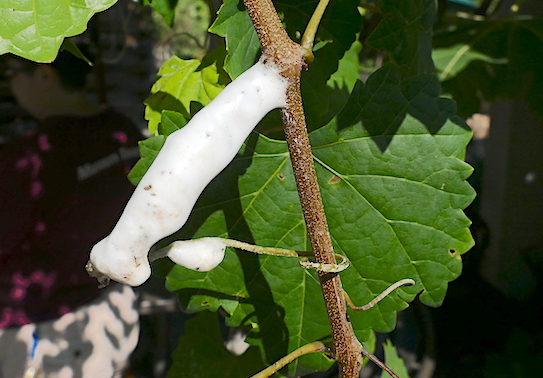
After hatching from eggs laid in or on the grape vine, nymphal spittle bugs begin feeding, sucking juices from the plant. This goes through the insect’s body and is forced out of the anus. Mixed with air and other substances secreted by the animal’s epidermal glands, a foamy mass is formed.
The nymph then pulls the foamy mixture up over its back and all around itself. The foam serves as protection against predators and desiccation. The more nymphs present the greater the mass.
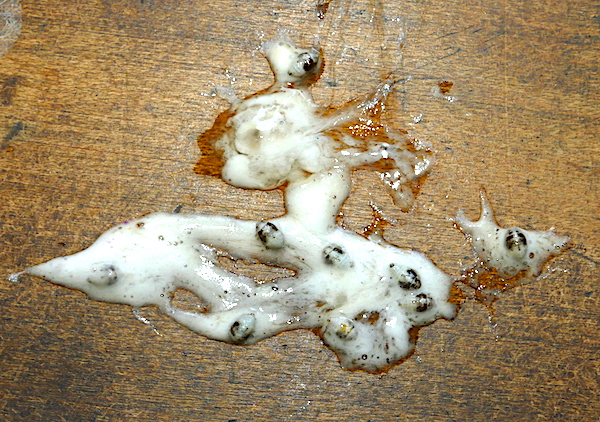
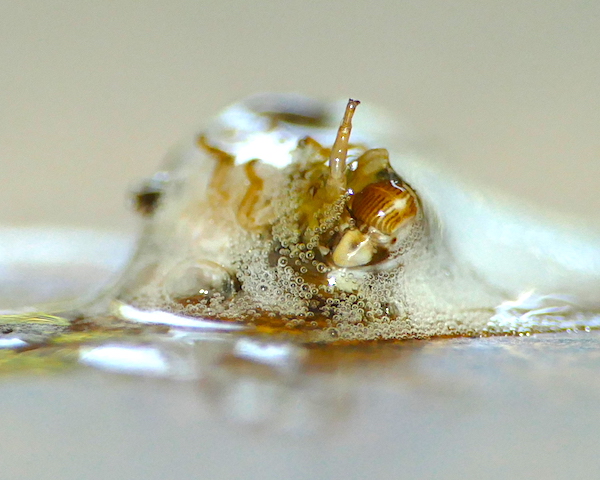
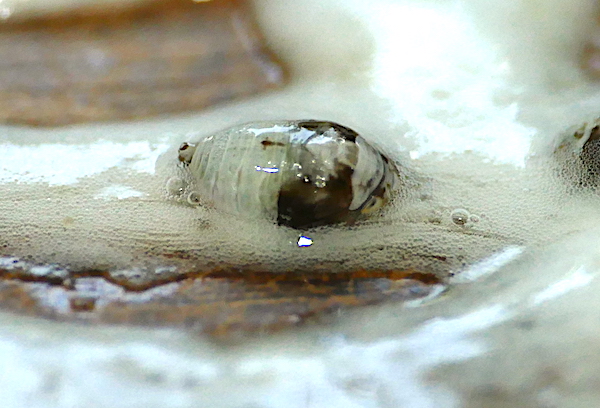
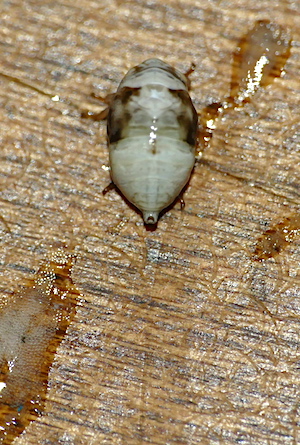
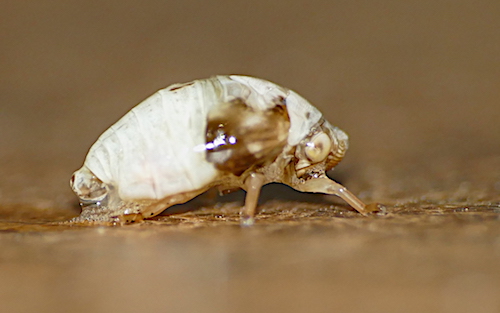
The spittlebugs seen here appear to be nymphs of eight-spotted spittlebugs (Clastoptera octonotata = “8 spots”). The nymphs in the photos are approximately 2mm in length. Their spittle is particularly sticky and dense compared to other common spittlebugs in the area, like the two-lined spittlebug (Prosopia bicincta = “2 belted or girdled”).
Two-lined spittlebugs make a lighter, more dilute foam and are typically found on grasses and other herbaceous plants.
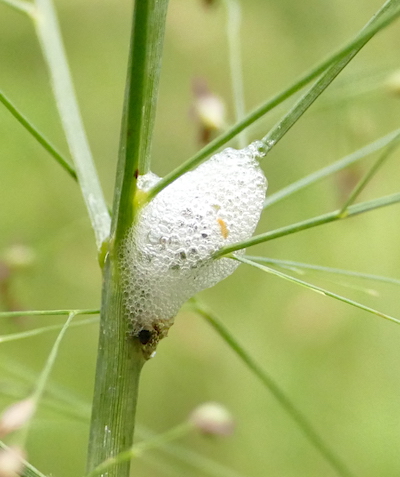
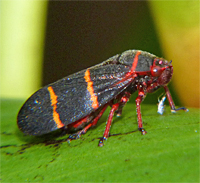
Spittlebugs are related to leafhoppers, treehoppers, and cicadas and make their living sucking the juices from plants.
Though the nymphs in their camouflaged hideouts would seem difficult to locate and prey upon, the adults seem, to me, less obvious. If you know what you’re looking for (a mass of spittle on a grape vine) the nymphs should be easy to find. The adults, which I do not yet have photos of, are more difficult to track down (which is why I don’t have photos of them). I don’t recall ever seeing an eight-spotted spittlebug (Clastoptera octonotata) adult. However, I may have just missed several of them.
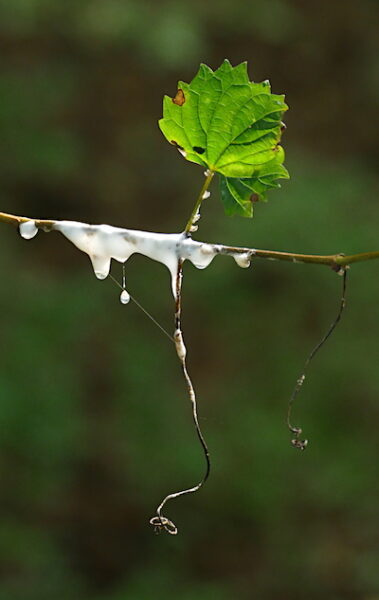
Look carefully at the photo above. Look at the leaf stem. Do you see three objects attached to the stem? Now look at the photo below…
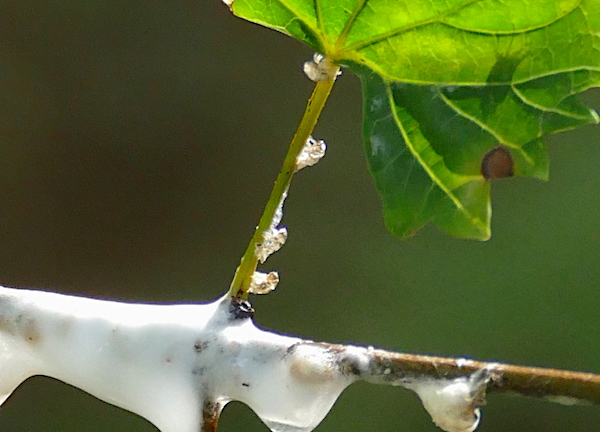
Those objects on the side of the stem are the left over skins of recently molted insects. It appears to me they were octonotata nymphs molting into adult form. I had just missed seeing an adult, three of them!
I watched a yellowjacket probe a mass of spittle but give up after several attempts to penetrate the goo. However, when I wanted to photograph the nymphs I knew just what to look for and how to reveal the little insects. Of course, most people are repulsed by the sticky mess and back off when face to face with it. So, I guess it does act as a repellant or protective shield from the outside world for its nymphal occupants. That is, except against curious naturalists.
Enjoy!